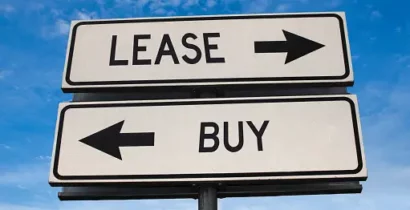Understanding Lease Agreements: What Tenants Should Know
A lease agreement is more than just a document – it’s a legal contract that outlines the terms and conditions of your rental arrangement. Whether you’re a first-time renter or a seasoned tenant, understanding the ins and outs of your lease agreement is essential for a smooth and harmonious renting experience. In this guide, we’ll break down the key components of a lease agreement and provide you with the knowledge you need to navigate your tenancy with confidence.
1. Lease Duration and Dates The lease agreement will specify the start and end dates of your tenancy. It’s important to know when your lease begins and when it expires, as well as any provisions for renewal.
2. Rent Amount and Due Dates Your lease will outline the monthly rent amount and the due date for payment. Make sure you’re clear about how much you owe and when it’s expected.
3. Security Deposit Understand the security deposit amount, as well as the conditions for its refund when you move out. Some deposits may be used to cover damages, so it’s crucial to maintain the property well.
4. Maintenance and Repairs Learn about your responsibilities for maintaining the property and which repairs are your responsibility versus the landlord’s. This helps prevent misunderstandings later on.
5. Utilities and Services Know which utilities are included in your rent and which ones you’re responsible for paying separately. This can include electricity, water, gas, and internet services.
6. Subletting and Guests Some lease agreements have clauses about subletting or having guests stay for extended periods. Be aware of any limitations or rules regarding these matters.
7. Pets and Pet Policies If you have pets or plan to get one, ensure you understand the property’s pet policies. This includes any pet fees, breed restrictions, and rules about pet care.
8. Maintenance and Inspections Familiarize yourself with the landlord’s right to access the property for inspections and repairs. There are usually notice requirements for these visits.
9. Rules and Regulations Review any rules and regulations outlined in the lease agreement. This can include rules about noise, smoking, and other aspects of living in the property.
10. Early Termination and Renewal Find out the process for early termination of the lease if needed, as well as the terms for lease renewal if you’re interested in staying beyond the initial term.
11. Legal Notices Understand the legal notices section, which outlines how notices should be given and received, whether it’s for eviction, rent increases, or other matters.
12. Dispute Resolution Review the dispute resolution section. This may outline how conflicts between you and the landlord will be resolved, whether through mediation or legal channels.
13. Signature and Agreement Carefully read the entire lease agreement before signing. By signing, you’re acknowledging that you’ve read and understood the terms, so it’s crucial to clarify any doubts beforehand.
14. Seek Clarification If you’re unsure about any part of the lease agreement, don’t hesitate to ask the landlord or property manager for clarification. It’s better to have a clear understanding before signing.
Lease agreements play a pivotal role in your renting experience. Taking the time to comprehend its contents ensures that you’re well-informed about your rights, responsibilities, and the terms of your tenancy. If you have any questions or concerns about the lease, seeking advice from legal professionals or tenant advocacy organizations can provide you with the guidance you need for a successful rental experience.



